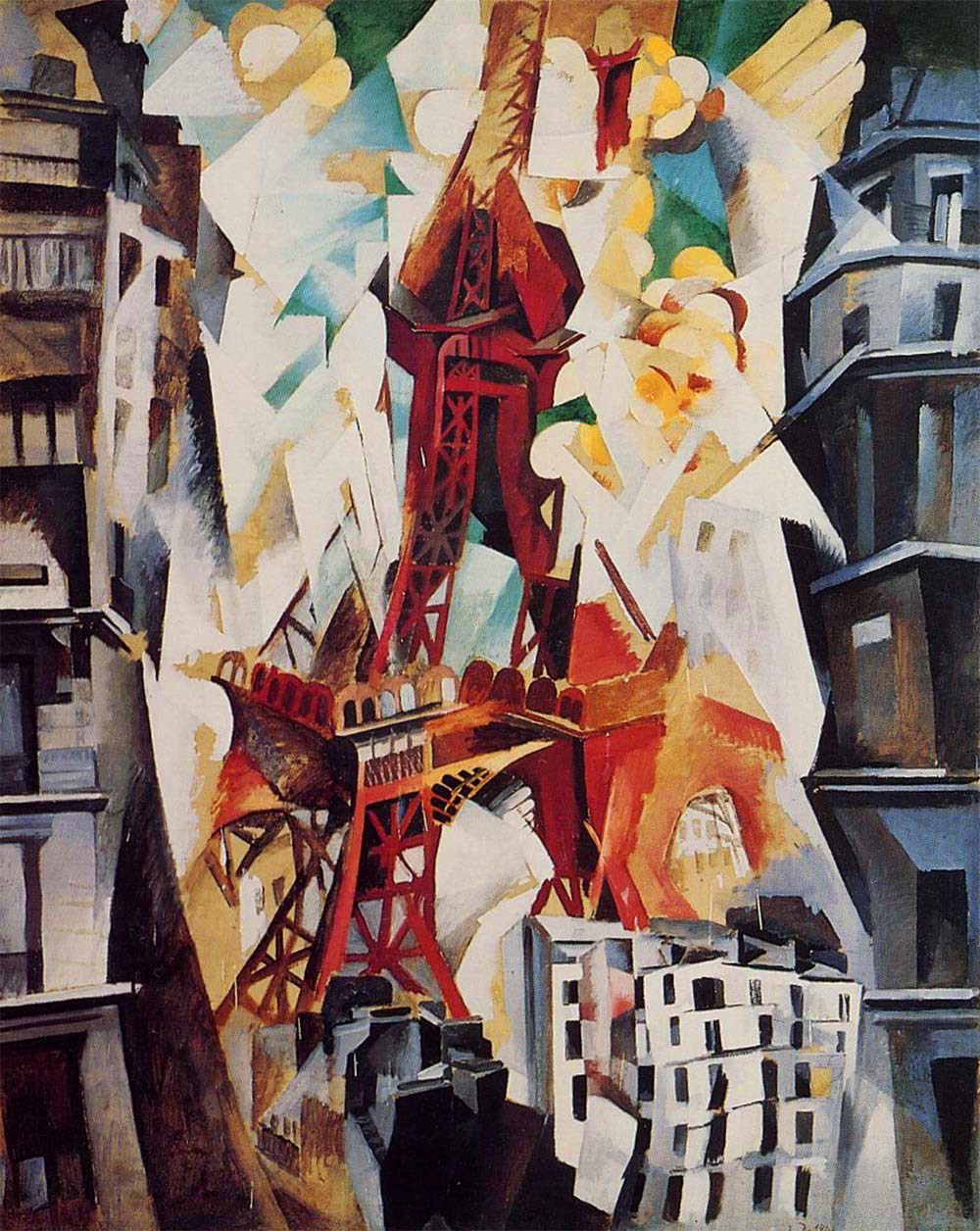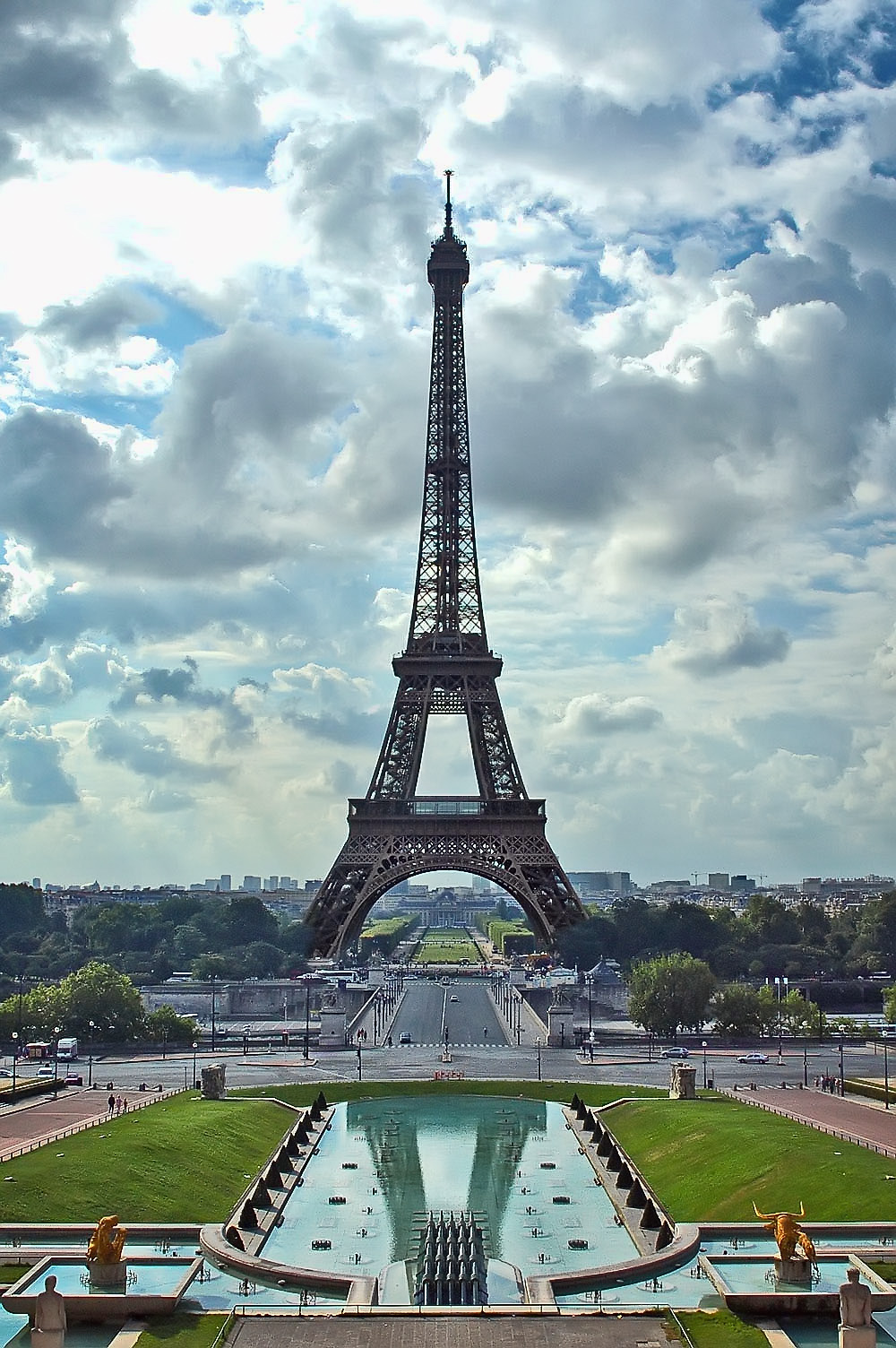|
Robert Delaunay
Robert Delaunay (12 April 1885 – 25 October 1941) was a French artist who, with his wife Sonia Delaunay and others, co-founded the Orphism art movement, noted for its use of strong colours and geometric shapes. His later works were more abstract. His key influence related to bold use of colour and a clear love of experimentation with both depth and tone. Overview Delaunay is most closely identified with Orphism. From 1912 to 1914, he painted nonfigurative paintings based on the optical characteristics of brilliant colors that were so dynamic they would function as the form. His theories are mostly concerned with color and light and influenced many, including Stanton Macdonald-Wright, Morgan Russell, Patrick Henry Bruce, Der Blaue Reiter, August Macke, Franz Marc, Paul Klee, and Lyonel Feininger. Art Critic Guillaume Apollinaire was strongly influenced by Delaunay's theories of color and often quoted from them to explain Orphism, which he had named. Delaunay's fixations ... [...More Info...] [...Related Items...] OR: [Wikipedia] [Google] [Baidu] |
Eiffel Tower (Delaunay Series)
The ''Eiffel Tower'' series of Robert Delaunay (1885 – 1941) is a cycle of paintings and drawings of the Eiffel Tower. Its main sequence was created between 1909 and 1912, with additional works added up to 1928. The series is considered the most prominent art depicting the iconic Paris tower as well as the most prominent work of Delaunay. The series was painted in an emerging Orphist style, an art movement co-founded by Robert and Sonia Delaunay and František Kupka that added bright colors and increased abstraction to Cubism. The ''Eiffel Tower'' series sits chronologically and stylistically between the artist's '' Saint-Séverin'' series and ''Windows'' series. Eiffel Tower as symbol Course of style over series List of works Legacy Delaunay's Eiffel Tower series is evoked in architectural paintings of other iconic buildings by his contemporary, the New York artist John Marin, in his ''Woolworth Building, No. 31'' of 1912, and later by the Ontario artist Greg Curnoe's ... [...More Info...] [...Related Items...] OR: [Wikipedia] [Google] [Baidu] |
Montpellier
Montpellier (, , ; oc, Montpelhièr ) is a city in southern France near the Mediterranean Sea. One of the largest urban centres in the region of Occitania, Montpellier is the prefecture of the department of Hérault. In 2018, 290,053 people lived in the city, while its metropolitan area had a population of 787,705.Comparateur de territoire INSEE, retrieved 20 June 2022. The inhabitants are called Montpelliérains. In the Middle Ages, Montpellier was an important city of the (and was the birthplace of ), and ... [...More Info...] [...Related Items...] OR: [Wikipedia] [Google] [Baidu] |
Lyonel Feininger
Lyonel Charles Feininger (July 17, 1871January 13, 1956) was a German-American painter, and a leading exponent of Expressionism. He also worked as a caricaturist and comic strip artist. He was born and grew up in New York City, traveling to Germany at 16 to study and perfect his art. He started his career as a cartoonist in 1894 and met with much success in this area. He was also a commercial caricaturist for 20 years for magazines and newspapers in the USA and Germany. At the age of 36, he started to work as a fine artist. He also produced a large body of photographic works between 1928 and the mid 1950s, but he kept these primarily within his circle of friends. He was also a pianist and composer, with several piano compositions and fugues for organ extant. Life and work Lyonel Feininger was born to German-American violinist and composer Karl Feininger and American singer Elizabeth Feininger. He was born and grew up in New York City, but traveled to Germany at the age of 16 in ... [...More Info...] [...Related Items...] OR: [Wikipedia] [Google] [Baidu] |
Pont-Aven School
Pont-Aven School (french: École de Pont-Aven, br, Skol Pont Aven) encompasses works of art influenced by the Breton town of Pont-Aven and its surroundings. Originally the term applied to works created in the artists' colony at Pont-Aven, which started to emerge in the 1850s and lasted until the beginning of the 20th century. Many of the artists were inspired by the works of Paul Gauguin, who spent extended periods in the area in the late 1880s and early 1890s. Their work is frequently characterised by the bold use of pure colour and their Symbolist choice of subject matter. Background Pont-Aven is a commune of the Finistère ''département'', in Brittany, France, some distance inland from where the river Aven meets the Atlantic Ocean. From the 1850s painters began to frequent the village of Pont-Aven, wanting to spend their summers away from the city, on a low budget in a picturesque place not yet spoilt by tourism. Gauguin first worked in Pont-Aven in 1886. When he returned in ... [...More Info...] [...Related Items...] OR: [Wikipedia] [Google] [Baidu] |
Brittany
Brittany (; french: link=no, Bretagne ; br, Breizh, or ; Gallo: ''Bertaèyn'' ) is a peninsula, historical country and cultural area in the west of modern France, covering the western part of what was known as Armorica during the period of Roman occupation. It became an independent kingdom and then a duchy before being united with the Kingdom of France in 1532 as a province governed as a separate nation under the crown. Brittany has also been referred to as Little Britain (as opposed to Great Britain, with which it shares an etymology). It is bordered by the English Channel to the north, Normandy to the northeast, eastern Pays de la Loire to the southeast, the Bay of Biscay to the south, and the Celtic Sea and the Atlantic Ocean to the west. Its land area is 34,023 km2 . Brittany is the site of some of the world's oldest standing architecture, home to the Barnenez, the Tumulus Saint-Michel and others, which date to the early 5th millennium BC. Today, the hi ... [...More Info...] [...Related Items...] OR: [Wikipedia] [Google] [Baidu] |
Salon Des Indépendants
Salon may refer to: Common meanings * Beauty salon, a venue for cosmetic treatments * French term for a drawing room, an architectural space in a home * Salon (gathering), a meeting for learning or enjoyment Arts and entertainment * Salon (Paris), a prestigious annual juried art exhibition in Paris begun under Louis XIV * ''The Salon'' (TV series), a British reality television show * ''The Salon'' (film), a 2005 American dramatic comedy movie * ''The Salon'' (comics), a graphic novel written and illustrated by Nick Bertozzi Places * Salon, Aube, France, a commune * Salon, Dordogne, France, a commune * Salon, India, a town and nagar panchayat * Salon (Assembly constituency), India, a constituency for the Uttar Pradesh Legislative Assembly Other uses * Salon.com, an online magazine * Champagne Salon, a producer of sparkling wine * Salon Basnet (born 1991), Nepali actor and model See also * * Salon-de-Provence, France, a commune * Salon-la-Tour, France, a commune * Sal ... [...More Info...] [...Related Items...] OR: [Wikipedia] [Google] [Baidu] |
Belleville, Paris
Belleville () is a neighbourhood of Paris, France, parts of which lie in four different arrondissements. The major portion of Belleville straddles the borderline between the 20th arrondissement and the 19th along its main street, the ''Rue de Belleville''. The remainder lies in the 10th and 11th arrondissements. It was once the independent commune (municipality) of Belleville which was annexed by the City of Paris in 1860 and divided between two arrondissements. Geographically, the neighborhood is situated on and around a hill which vies with Montmartre as the highest in Paris. The name Belleville literally means "beautiful town". History Historically, Belleville was a working-class neighborhood. People living in the independent village of Belleville played a large part in establishing the Second French Republic through their actions during the Revolution of 1848. In 1871, residents of the incorporated neighborhood of Belleville were some of the strongest supporters of ... [...More Info...] [...Related Items...] OR: [Wikipedia] [Google] [Baidu] |
Decorative Arts
] The decorative arts are arts or crafts whose object is the design and manufacture of objects that are both beautiful and functional. It includes most of the arts making objects for the interiors of buildings, and interior design, but not usually architecture. Ceramic art, metalwork, furniture, jewellery, fashion, various forms of the textile arts and glassware are major groupings. Applied arts largely overlaps with decorative arts, and the modern making of applied art is usually called design. The decorative arts are often categorized in distinction to the " fine arts", namely painting, drawing, photography, and large-scale sculpture, which generally produce objects solely for their aesthetic quality and capacity to stimulate the intellect. Distinction from the fine arts The distinction between the decorative and fine arts essentially arose from the post-Renaissance art of the West, where the distinction is for the most part meaningful. This distinction is much les ... [...More Info...] [...Related Items...] OR: [Wikipedia] [Google] [Baidu] |
Atelier
An atelier () is the private workshop or studio of a professional artist in the fine or decorative arts or an architect, where a principal master and a number of assistants, students, and apprentices can work together producing fine art or visual art released under the master's name or supervision. Ateliers were the standard vocational practice for European artists from the Middle Ages to the 19th century, and common elsewhere in the world. In medieval Europe this way of working and teaching was often enforced by local guild regulations, such as those of the painters' Guild of Saint Luke, and of other craft guilds. Apprentices usually began working on simple tasks when young, and after some years with increasing knowledge and expertise became journeymen, before possibly becoming masters themselves. This master-apprentice system was gradually replaced as the once powerful guilds declined, and the academy became a favored method of training. However, many professional artist ... [...More Info...] [...Related Items...] OR: [Wikipedia] [Google] [Baidu] |
Bourges
Bourges () is a commune in central France on the river Yèvre. It is the capital of the department of Cher, and also was the capital city of the former province of Berry. History The name of the commune derives either from the Bituriges, the name of the original inhabitants, or from the Germanic word '' Burg'' (French: ''bourg''; Spanish: ''burgo''; English, others: '' burgh'', ''berg'', or '' borough''), for "hill" or "village". The Celts called it ''Avaricon''; Latin-speakers: ''Avaricum''. In the fourth century BC, as in the time of Caesar, the area around it was the center of a Gallic (Celtic) confederacy. In 52 BC, the sixth year of the Gallic Wars, while the Gauls implemented a scorched-earth policy to try to deny Caesar's forces supplies, the inhabitants of Avaricum begged not to have their town burned. It was temporarily spared due to its good defences provided by the surrounding marshes, by a river that nearly encircled it, and by a strong southern wall. Jul ... [...More Info...] [...Related Items...] OR: [Wikipedia] [Google] [Baidu] |
Count
Count (feminine: countess) is a historical title of nobility in certain European countries, varying in relative status, generally of middling rank in the hierarchy of nobility. Pine, L. G. ''Titles: How the King Became His Majesty''. New York: Barnes & Noble, 1992. p. 73. . The etymologically related English term " county" denoted the territories associated with the countship. Definition The word ''count'' came into English from the French ''comte'', itself from Latin '' comes''—in its accusative ''comitem''—meaning “companion”, and later “companion of the emperor, delegate of the emperor”. The adjective form of the word is " comital". The British and Irish equivalent is an earl (whose wife is a "countess", for lack of an English term). In the late Roman Empire, the Latin title '' comes'' denoted the high rank of various courtiers and provincial officials, either military or administrative: before Anthemius became emperor in the West in 467, he was a military ... [...More Info...] [...Related Items...] OR: [Wikipedia] [Google] [Baidu] |




.jpg)


